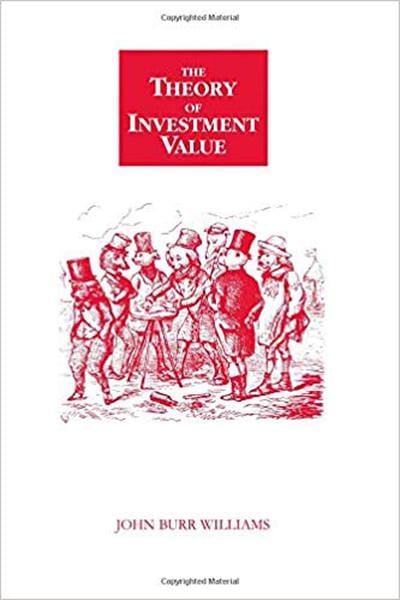 author
authorDiscover the Best Books Written by John Burr Williams
John Burr Williams (November 27, 1900 – September 15, 1989) was an American economist recognized as an important figure in the field of fundamental analysis and for his analysis of stock prices as reflecting their "intrinsic value." He is best known for his 1938 text The Theory of Investment Value, based on his Ph.D. thesis, in which he articulated the theory of discounted cash flow (DCF) based valuation and, in particular, dividend-based valuation.
Williams studied mathematics and chemistry at Harvard University and enrolled at Harvard Business School in 1923. After graduating, he worked as a security analyst, where he realized that "how to estimate the fair value was a puzzle indeed... To be a good investment analyst, one needs to be an expert economist also." In 1932 he enrolled at Harvard for a Ph.D. in economics, with the hopes of learning what had caused the Wall Street Crash of 1929 and the subsequent economic depression of the 1930s.
For his thesis, Joseph Schumpeter suggested the question of the intrinsic value of common stock, for which Williams' personal experience and background would serve him in good stead. He received his doctorate in 1940. Williams sent The Theory of Investment Value for publication before he had won faculty approval for his doctorate. The work discusses Williams' general theory as well as provides over 20 specific mathematical models; it also contains a second section devoted to case studies.
Various publishers refused the work since it contained algebraic symbols. Harvard University Press published The Theory of Investment Value in 1938, only after Williams had agreed to pay part of the printing cost. The work has been influential since its publication; Mark Rubinstein describes it as an "insufficiently appreciated classic."
From 1927 until his death, Williams worked in the management of private investment portfolios and security analysis. He taught economics and investment analysis as a visiting professor at the University of Wisconsin–Madison; he also wrote many articles for economic journals. Today, his privately held investment management company, Burr and Company, LLC., is run by his grandson, John Borden Williams.
Williams was among the first to challenge the "casino" view that economists held of financial markets and asset pricing—where prices are determined largely by expectations and counter-expectations of capital gains (see Keynesian beauty contest). He argued that financial markets are, instead, "markets," properly speaking, and that prices should therefore reflect an asset's intrinsic value. (Theory of Investment Value opens with: "Separate and distinct things not to be confused, as every thoughtful investor knows, are really worth and market price...".)
In so doing, he changed the focus from the time series of the market to the underlying components of asset value. Rather than forecasting stock prices directly, Williams emphasized future corporate earnings and dividends. Developing this idea, Williams proposed that the value of an asset should be calculated using “evaluation by the rule of present worth.” Thus, for common stock, the intrinsic, long-term worth is the present value of its future net cash flows—in the form of dividend distributions and selling prices. Under conditions of certainty, the value of a stock is, therefore, the discounted value of all its future dividends; see Gordon model.
While Williams did not originate the idea of present value, he substantiated the concept of discounted cash flow valuation and is generally regarded as having developed the basis for the dividend discount model (DDM). Through his approach to modeling and forecasting cash flows—which he called “algebraic budgeting”—Williams was also a pioneer of the pro forma modeling of financial statements. Here, Williams (Theory, ch. 7) provides an early discussion of the industry lifecycle.
Best author’s book



Written books
1



















